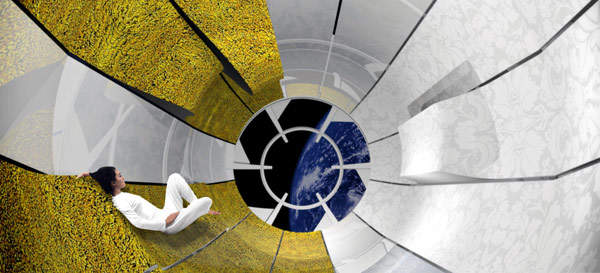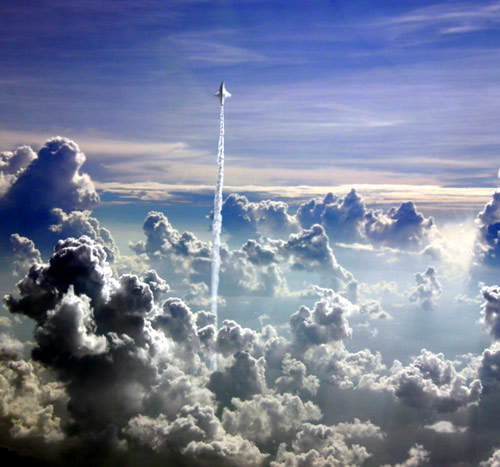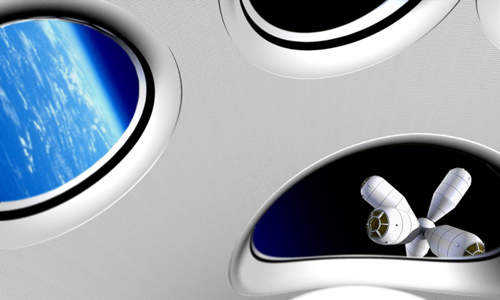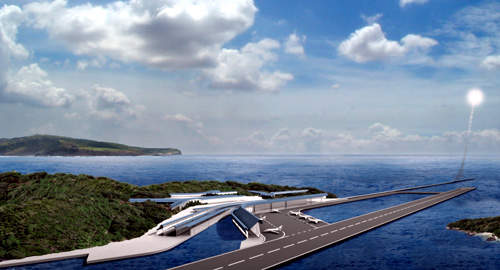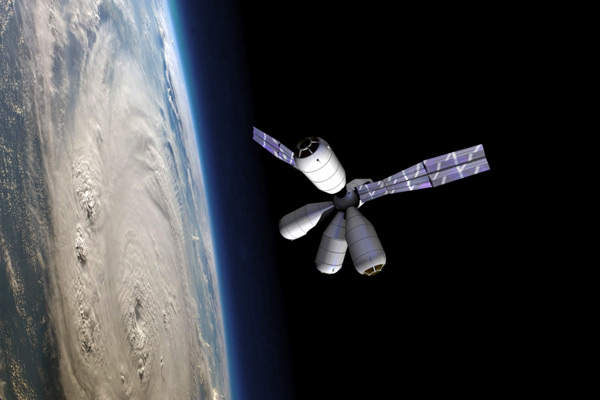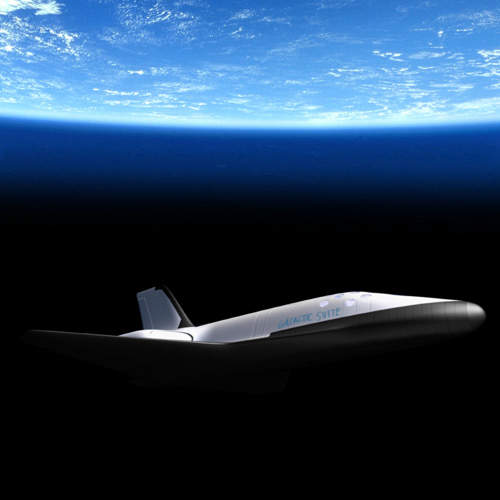Galactic Suite is the first ever hotel designed for outer space. It is the brainchild of Barcelona-based architect and former aerospace engineer Xavier Claramunt from Equip XCL architects.
The ‘space resort’ is designed to orbit the earth at a distance of 450km, and at a speed of 30,000km, and will accommodate a maximum of four guests and two astronaut-pilots. The first Galactic Suite is due for completion in 2012, but Claramunt expects more space hotels for the client – Galactic Suite Limited (GSL) – will follow, establishing the company as the world’s largest chain of space resorts.
The project will establish an integrated space-based tourism concept. It will consist of three pillars; spaceport, spaceship and the space hotel. The construction planning for thie Galactic Suite is underway.
Galactic Suite funding
Financing a space tourism project such as Galactic Suite was always going to be a challenge – and was one of the reasons Claramunt initially regarded the hotel concept as ‘a joke’. But the architect – renowned for his innovative architectural ventures, including an underwater hotel – was fortunate to receive the good will of an anonymous billionaire space enthusiast. The financier granted $3bn to the project – enough for Claramunt to begin putting ideas into motion.
In 2007 the private space tourism company Galactic Suite Limited was created, and began developing a master plan in collaboration with four key companies eager to be involved in the project. These companies are Equip XCL, strategic advisory firm Global Business Technologies (GBT), the Aerospace Research and Technology Centre (CTAE) – all from Spain – and the emerging US space commerce company 4 Frontiers Corporation (4FC), which is focused on the settlement of Mars.
The cost per person, for a three-day-stay at Galactic Suite is €3m, and the hotel has seen a total of 38 bookings made through the company’s website since January 2008. The most reservations are from people in the US (8), with space tourists from the United Arab Emirates (7), China (6), Russia (5), Australia (5), Spain (4) and South America (3) making up the remainder.
Space hotel
The three-‘bedroom’ suite will be made up of four modules that connect to a central enclosed area. The structure’s modular form is necessary, according to the architect, because the components must be small enough to fit into a rocket, enabling their transportation into space.
Each module will have a diaphragm window that can be slid back to enhance views of the Earth. The rooms will measure 7m in length and 4m in height. The interior will not feature any angles or straight lines. Instead, along the edge there will be protuberances that will allow guests to attach themselves when they are eating, viewing the space or sleeping. To further avoid the feeling of weightlessness, the hotel will provide Velcro suits to its guests, allowing them to stick to the walls.
Travelling at 30,000km/h, the hotel will complete 15 orbits a day (one every 90 minutes) and passengers will see as many sunsets and sunrises.
Ultimately, a stay at the hotel will “offer a mixed programme of reflection and exercise to seize the unique physical conditions encountered in space,” says Claramunt.
Galactic Suite will also feature the world’s first outer space spa. Bathing in space has traditionally involved the astronaut using a water bubble to wet and soap the skin, and then a suction device to remove the wastewater. In the Galactic Suite’s Space Spa, the guest will enter a zero gravity spherical container together with a water bubble of 20l. In the weightless environment, the guest can ‘play’ with the water bubble, dividing it into an infinite number of separate bubbles.
Surreal sleeping arrangements, weightlessness fitness activities and views of the Earth and moon are other features of the resort.
Spaceship
The spaceship will carry a minimum of four passengers and two astronauts. Equipped with a double hybrid rocket engine, the spaceship will be designed to fly up to an altitude of 400km in orbit.
Spaceport
As well as the orbiting hotel, the project will include the construction of a spaceport – also designed by Equip – to be built on an island in the Caribbean. This facility will be used to provide James Bond-style astronaut training to passengers, lasting 18 weeks, and will be the launching base for the rocket. Guests will also be allowed to bring their families to the spaceport during the training period to relax in the tropical resort-style accommodation in the days leading up to departure.
The spaceport will be constructed for an estimated cost of €150m. Extending 40,000m², the spaceport will consist of two runways, each 3km in length. Designed as a luminous structure, the building will include facilities necessary for maintaining private jets and the spaceship. Private jets will be used to bring the guests to the island.
The spaceport incorporates a revolutionary space launch system designed to maximise safety while minimising harm to the environment. Using magnetic levitation, the spacecraft will accelerate along a three-mile-long trail, reaching 1,000km/h (620mph) in under 20 seconds. Once the speed of sound has been reached, the spacecraft will separate from the accelerator, and, using its double hybrid rocket engine, rise into orbit at 450km.
The founders of GSL explain that the maglev technology will establish commercial flights into space toward their orbital hotels.
“The most expensive part of any journey to LEO [low earth orbit] is the first few seconds – leaving the ground,” says Claramunt. “This technology is very competitive in its cost in respect to other forms of space transportation, and is inherently safe and sustainable.”

